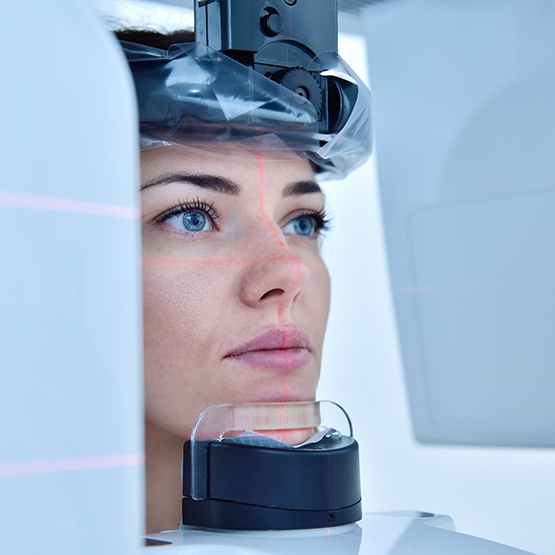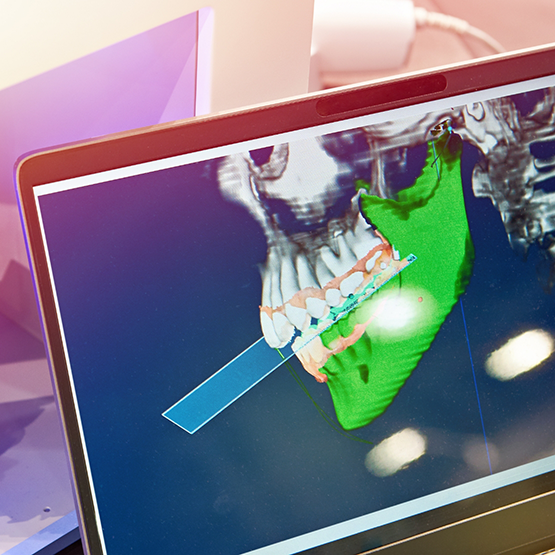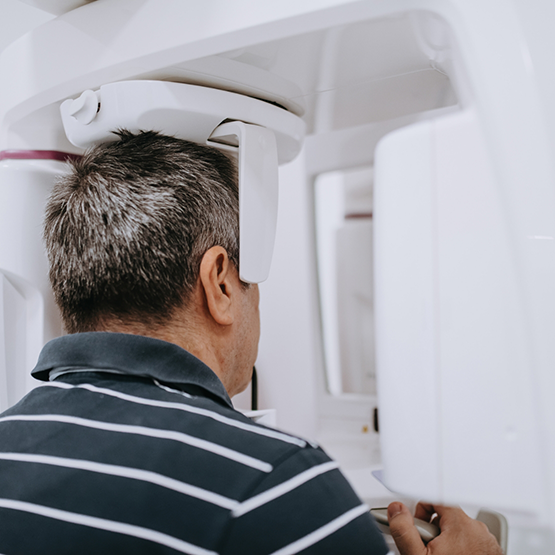CT/Cone Beam Scanner Goodlettsville
Taking a Complete Look at Your Mouth

The importance of digital X-rays in dentistry cannot be understated. Being able to monitor your oral health in areas that are hidden from the naked eye allows Dr. McClain to diagnose a large number of potential problems before they compromise your smile. But when a dentist in Goodlettsville needs to gather as much detail about your oral cavity as possible for an extended or advanced procedure (such as placing dental implants), a dental X-ray isn’t always enough. That’s why Goodlettsville Smiles has adopted a cone beam scanner, or CBCT scanner, for advanced imaging. Read on to learn more about how this example of advanced technology makes our services even better.
What Is a Cone Beam Scanner?

The term “CBCT scanner” stands for “cone beam computed tomography scanner.” It’s actually not dissimilar to a regular X-ray machine, as it utilizes the same kind of radiation to capture images of your mouth. However, because the radiation is emitted in a cone-shaped beam, it can create three-dimensional images of your mouth and jaw. This lets us examine details that wouldn’t show up in normal X-rays, such as connective tissues and nerves that we might need to work around for oral surgery.
What Is a Cone Beam Scanner Used For?

A cone beam scanner can be used in a variety of ways based on the patient’s unique situation. In some cases, it can help diagnose specific oral health issues, such as cavities or infections that require a root canal. Not only does it allow us to detect the problem, but it also shows us exactly what to expect while working with the tooth so that we can take the right steps to preserve it.
We also use our cone beam scanner for root canal diagnostics--we're able to visualize the number and location of canals and look for fractures and other anomalies that could be causing pain.
A cone beam X-ray is very helpful when planning and placing dental implants. Because the scans show us everything that’s hidden under your gums, we’re able to plan implant placement so that no unnecessary damage is done. For example, if we know where certain nerves are located, we can place implants in a way that avoids them entirely. This level of precision minimizes the risk of complications and makes it more likely that you’ll be able to keep your dental implants for many years to come.
What Can You Expect During a Cone Beam Scan?

Before we start the scan, we might ask you to remove any jewelry that could interfere with the process. We’ll make sure that your head is positioned properly in the machine, and then we’ll ask you to hold still while we perform the scans. The process doesn’t take very long, although some scans are longer than others. You might have to stay there for 40 or more seconds, but in some cases, it takes much less time. Regardless of how long it takes, there is no discomfort associated with this entirely non-invasive process, and the results will be available for viewing as soon as the scan is complete.

